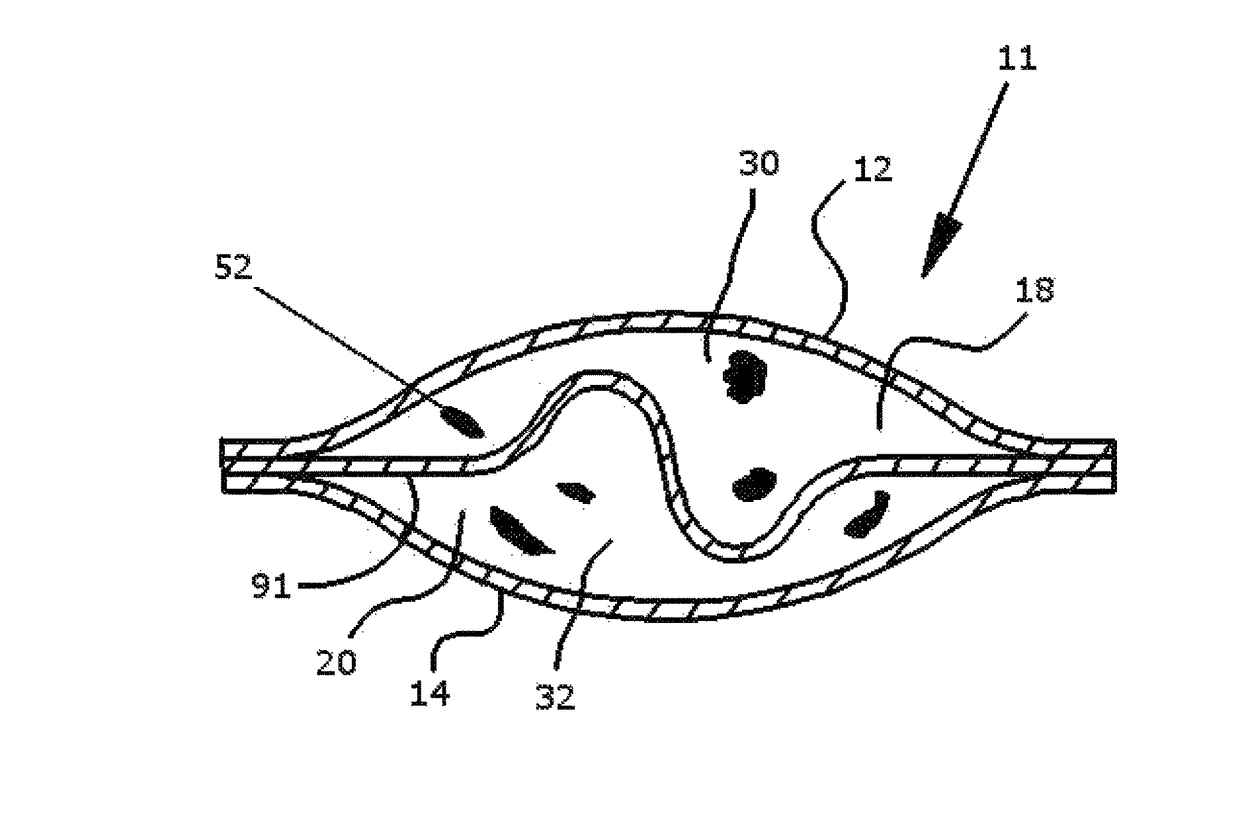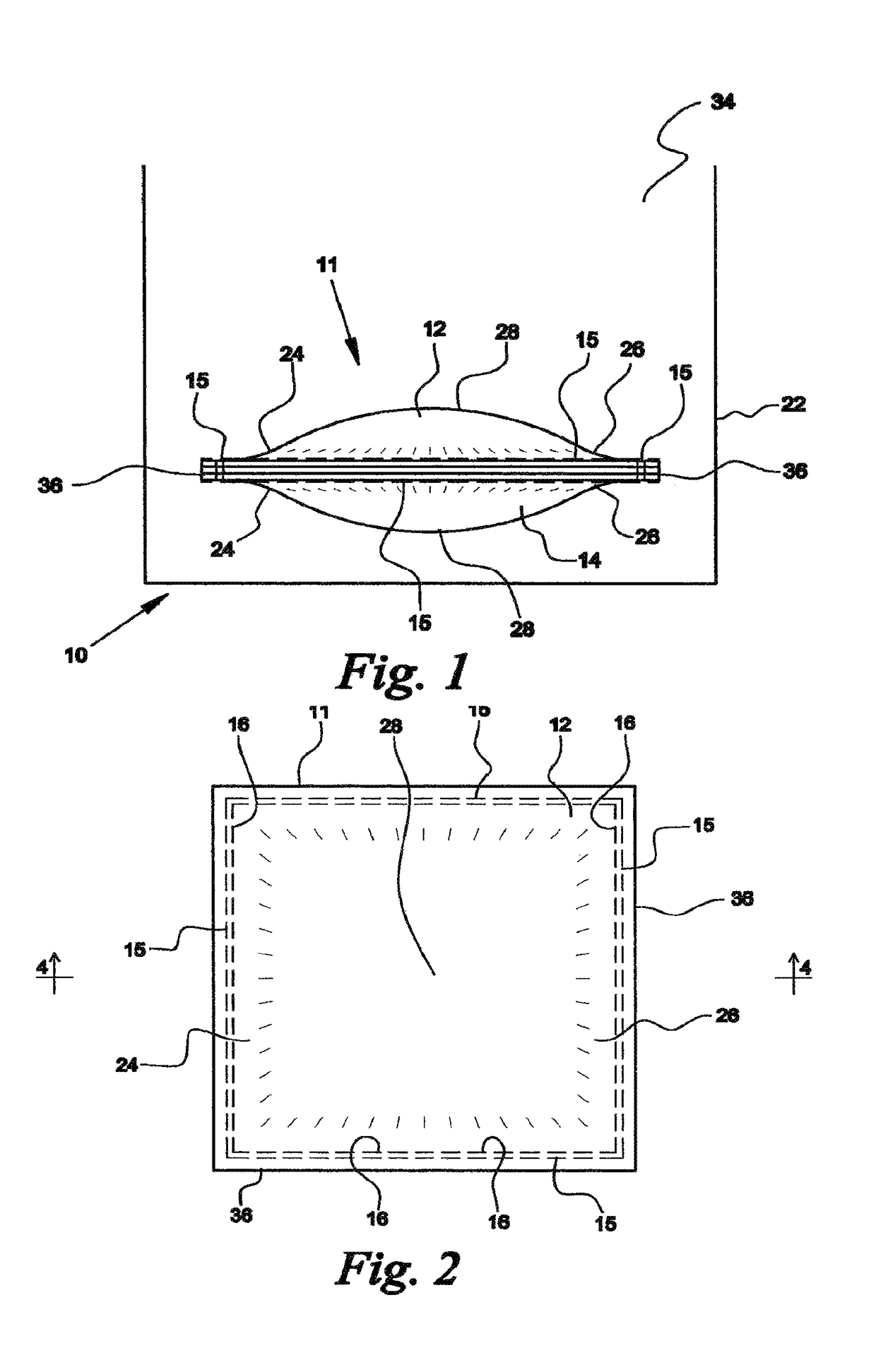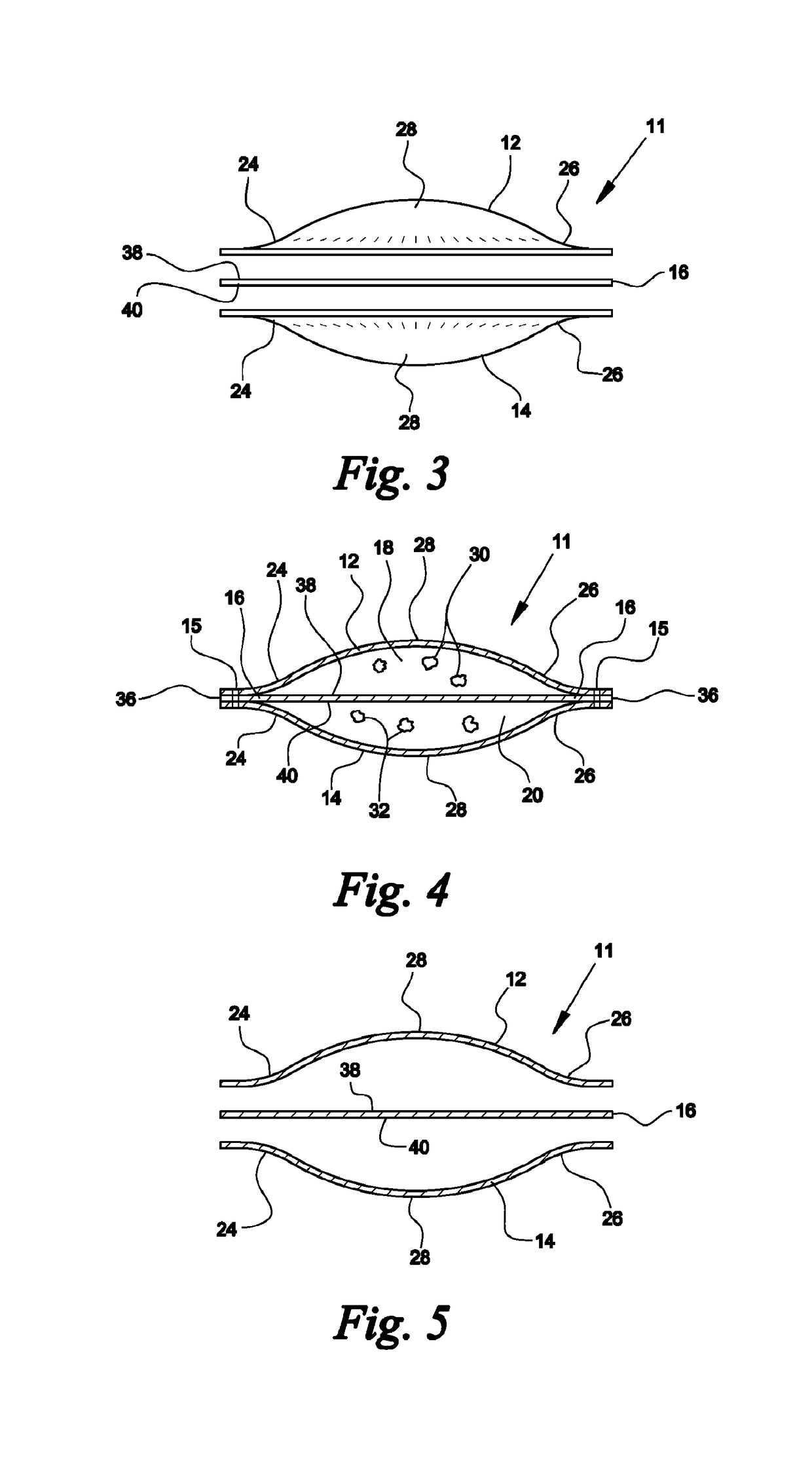Device for facilitating a chemical reaction
a technology of chemical reaction and device, which is applied in the direction of physical/chemical process catalysts, packaging foodstuffs, packaged goods, etc., can solve the problems of increasing the reaction time required for completing chlorine, restricting the “breathability” of the shell, and providing one cavity, etc., to facilitate the reaction
- Summary
- Abstract
- Description
- Claims
- Application Information
AI Technical Summary
Benefits of technology
Problems solved by technology
Method used
Image
Examples
Embodiment Construction
[0043]Referring now to FIGS. 1-5, a device fabricated from compressed cellulose for facilitating a chemical reaction between a liquid catalyst and one or more dry reactants within the device to produce a gas or liquid that is ultimately released into air or liquid is denoted as numeral 10. One use for the device 10 of the present invention is the generation of a gas by acid activation. Examples of acid activation include, but are not limited to acid activation of a carbonate via calcium carbonate combined with citric acid in the presence of moisture to form carbon dioxide, acid activation of a sulfite via sodium bisulfite or potassium bisulfite with fumaric acid and / or potassium bitartrate in the presence of moisture to form sulfur dioxide gas, and acid activation of a nitrite via sodium nitrite or potassium nitrite in the presence of moisture to form nitrogen dioxide gas.
[0044]A preferred use of the device 10 is the generation of chlorine dioxide gas for release into air or water. ...
PUM
| Property | Measurement | Unit |
|---|---|---|
| specific gravity | aaaaa | aaaaa |
| specific gravity | aaaaa | aaaaa |
| diameter | aaaaa | aaaaa |
Abstract
Description
Claims
Application Information
 Login to View More
Login to View More - R&D
- Intellectual Property
- Life Sciences
- Materials
- Tech Scout
- Unparalleled Data Quality
- Higher Quality Content
- 60% Fewer Hallucinations
Browse by: Latest US Patents, China's latest patents, Technical Efficacy Thesaurus, Application Domain, Technology Topic, Popular Technical Reports.
© 2025 PatSnap. All rights reserved.Legal|Privacy policy|Modern Slavery Act Transparency Statement|Sitemap|About US| Contact US: help@patsnap.com



